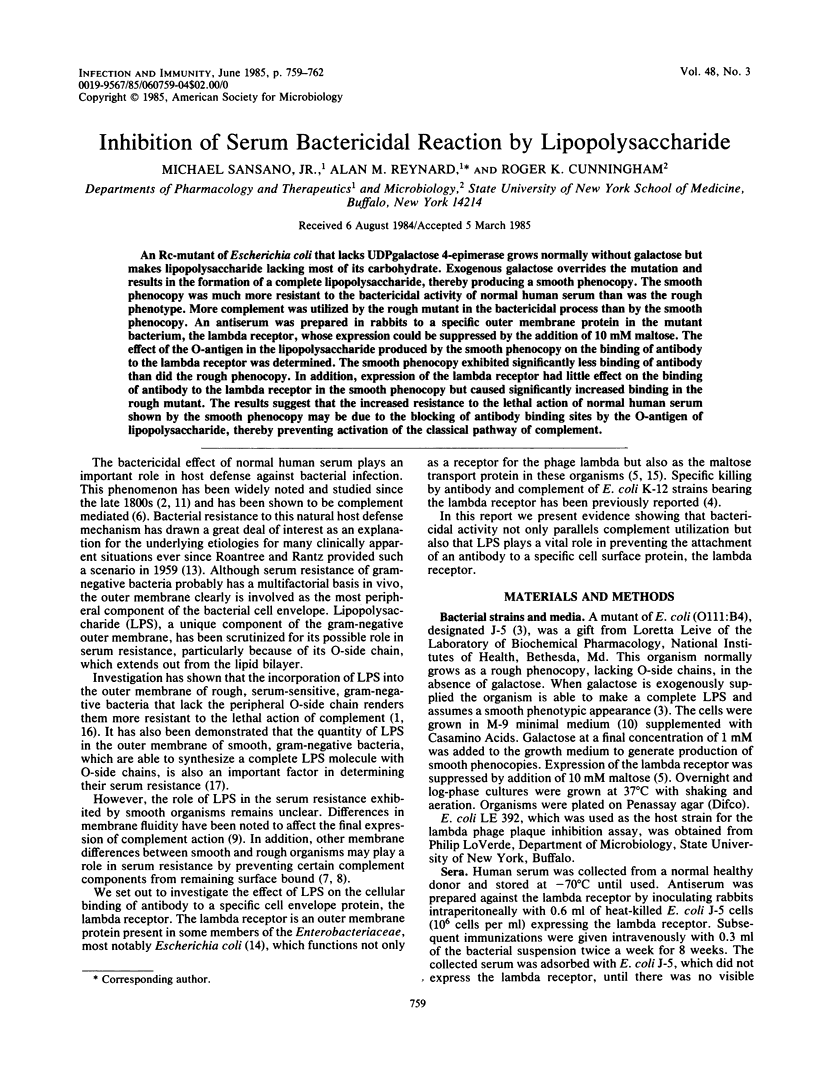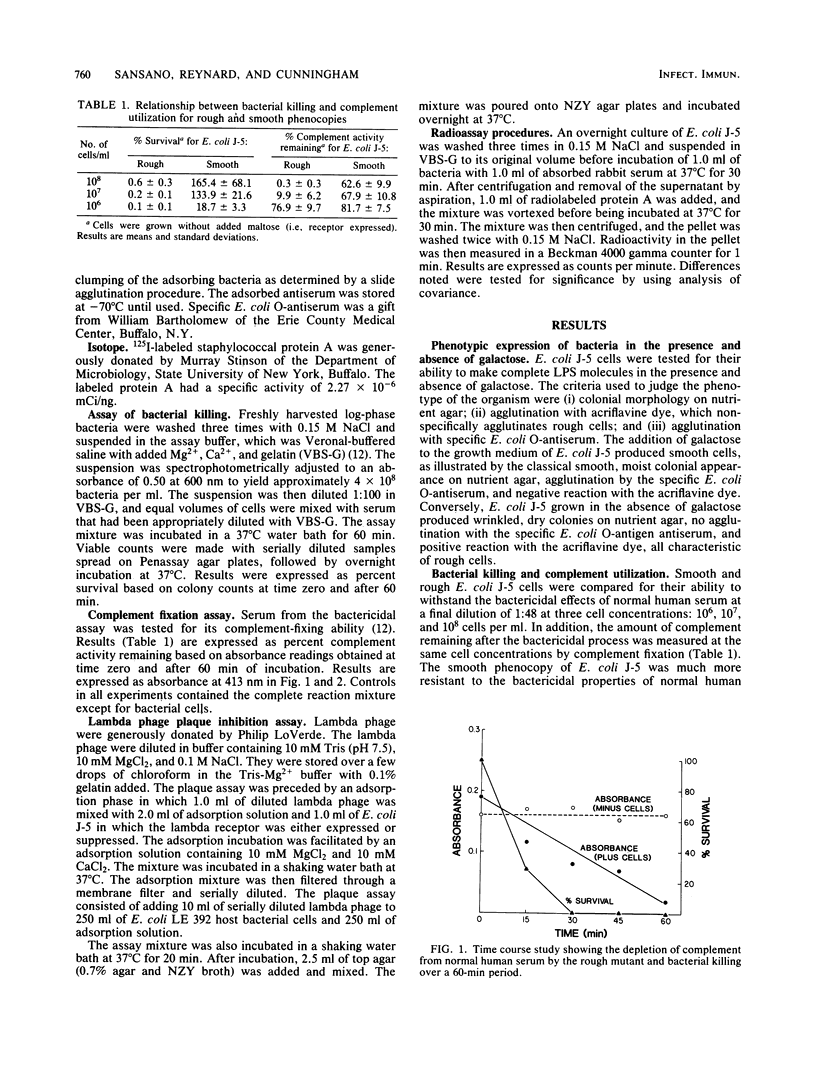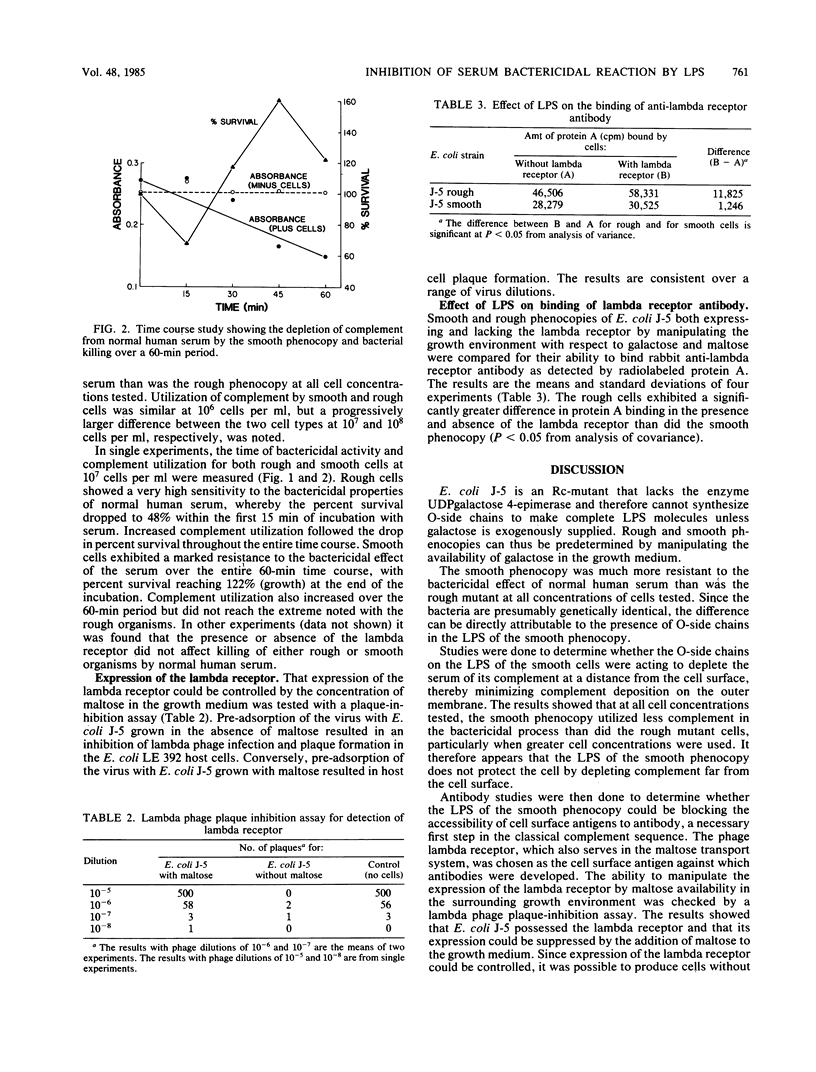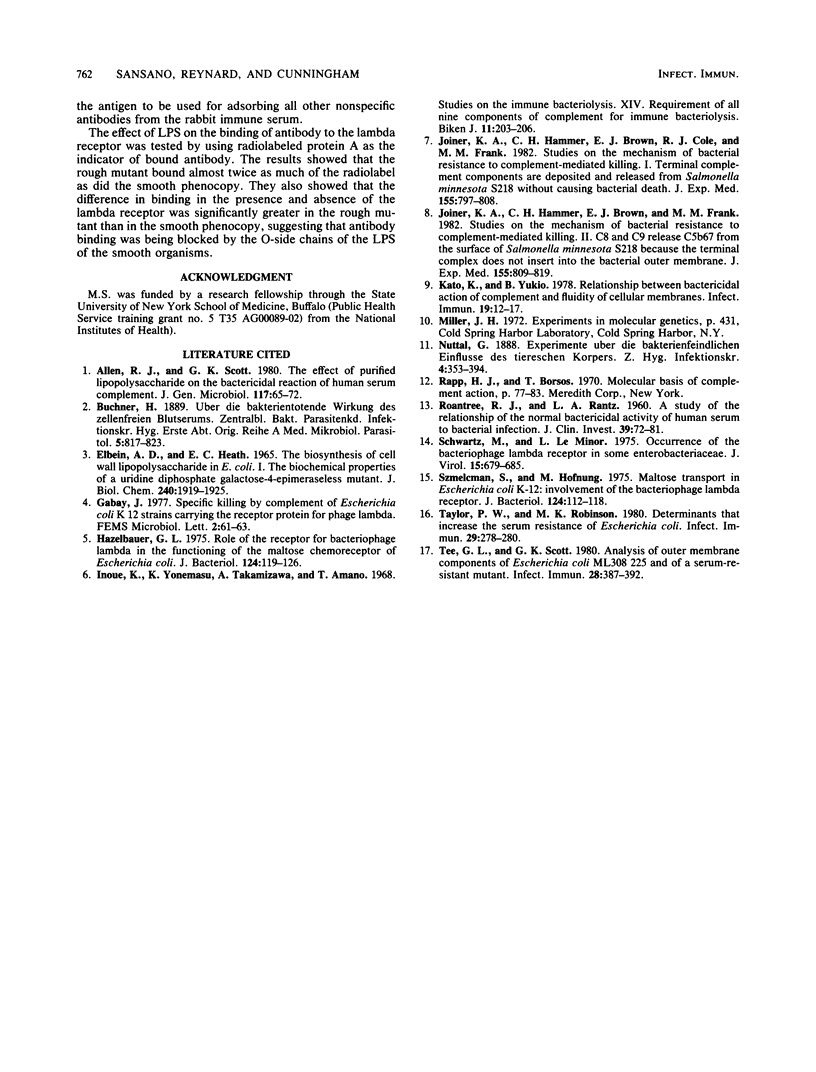Abstract
An Rc-mutant of Escherichia coli that lacks UDPgalactose 4-epimerase grows normally without galactose but makes lipopolysaccharide lacking most of its carbohydrate. Exogenous galactose overrides the mutation and results in the formation of a complete lipopolysaccharide, thereby producing a smooth phenocopy. The smooth phenocopy was much more resistant to the bactericidal activity of normal human serum than was the rough phenotype. More complement was utilized by the rough mutant in the bactericidal process than by the smooth phenocopy. An antiserum was prepared in rabbits to a specific outer membrane protein in the mutant bacterium, the lambda receptor, whose expression could be suppressed by the addition of 10 mM maltose. The effect of the O-antigen in the lipopolysaccharide produced by the smooth phenocopy on the binding of antibody to the lambda receptor was determined. The smooth phenocopy exhibited significantly less binding of antibody than did the rough phenocopy. In addition, expression of the lambda receptor had little effect on the binding of antibody to the lambda receptor in the smooth phenocopy but caused significantly increased binding in the rough mutant. The results suggest that the increased resistance to the lethal action of normal human serum shown by the smooth phenocopy may be due to the blocking of antibody binding sites by the O-antigen of lipopolysaccharide, thereby preventing activation of the classical pathway of complement.
Full text
PDF



Selected References
These references are in PubMed. This may not be the complete list of references from this article.
- Allen R. J., Scott G. K. The effect of purified lipopolysaccharide on the bactericidal reaction of human serum complement. J Gen Microbiol. 1980 Mar;117(1):65–72. doi: 10.1099/00221287-117-1-65. [DOI] [PubMed] [Google Scholar]
- ELBEIN A. D., HEATH E. C. THE BIOSYNTHESIS OF CELL WALL LIPOPOLYSACCHARIDE IN ESCHERICHIA COLI. I. THE BIOCHEMICAL PROPERTIES OF A URIDINE DIPHOSPHATE GALACTOSE 4-EPIMERASELESS MUTANT. J Biol Chem. 1965 May;240:1919–1925. [PubMed] [Google Scholar]
- Hazelbauer G. L. Role of the receptor for bacteriophage lambda in the functioning of the maltose chemoreceptor of Escherichia coli. J Bacteriol. 1975 Oct;124(1):119–126. doi: 10.1128/jb.124.1.119-126.1975. [DOI] [PMC free article] [PubMed] [Google Scholar]
- Inoue K., Yonemasu K., Takamizawa A., Amano T. [Studies on the immune bacteriolysis. XIV. Requirement of all nine components of complement for immune bacteriolysis]. Biken J. 1968 Sep;11(3):203–206. [PubMed] [Google Scholar]
- Joiner K. A., Hammer C. H., Brown E. J., Cole R. J., Frank M. M. Studies on the mechanism of bacterial resistance to complement-mediated killing. I. Terminal complement components are deposited and released from Salmonella minnesota S218 without causing bacterial death. J Exp Med. 1982 Mar 1;155(3):797–808. doi: 10.1084/jem.155.3.797. [DOI] [PMC free article] [PubMed] [Google Scholar]
- Joiner K. A., Hammer C. H., Brown E. J., Frank M. M. Studies on the mechanism of bacterial resistance to complement-mediated killing. II. C8 and C9 release C5b67 from the surface of Salmonella minnesota S218 because the terminal complex does not insert into the bacterial outer membrane. J Exp Med. 1982 Mar 1;155(3):809–819. doi: 10.1084/jem.155.3.809. [DOI] [PMC free article] [PubMed] [Google Scholar]
- Kato K., Bito Y. Relationship between bactericidal action of complement and fluidity of cellular membranes. Infect Immun. 1978 Jan;19(1):12–17. doi: 10.1128/iai.19.1.12-17.1978. [DOI] [PMC free article] [PubMed] [Google Scholar]
- Roantree R. J., Rantz L. A. A STUDY OF THE RELATIONSHIP OF THE NORMAL BACTERICIDAL ACTIVITY OF HUMAN SERUM TO BACTERIAL INFECTION. J Clin Invest. 1960 Jan;39(1):72–81. doi: 10.1172/JCI104029. [DOI] [PMC free article] [PubMed] [Google Scholar]
- Schwartz M., Le Minor L. Occurrence of the bacteriophage lambda receptor in some enterobacteriaceae. J Virol. 1975 Apr;15(4):679–685. doi: 10.1128/jvi.15.4.679-685.1975. [DOI] [PMC free article] [PubMed] [Google Scholar]
- Szmelcman S., Hofnung M. Maltose transport in Escherichia coli K-12: involvement of the bacteriophage lambda receptor. J Bacteriol. 1975 Oct;124(1):112–118. doi: 10.1128/jb.124.1.112-118.1975. [DOI] [PMC free article] [PubMed] [Google Scholar]
- Taylor P. W., Robinson M. K. Determinants that increase the serum resistance of Escherichia coli. Infect Immun. 1980 Jul;29(1):278–280. doi: 10.1128/iai.29.1.278-280.1980. [DOI] [PMC free article] [PubMed] [Google Scholar]
- Tee G. L., Scott G. K. Analysis of outer membrane components of Escherichia coli ML308 225 and of a serum-resistant mutant. Infect Immun. 1980 May;28(2):387–392. doi: 10.1128/iai.28.2.387-392.1980. [DOI] [PMC free article] [PubMed] [Google Scholar]


